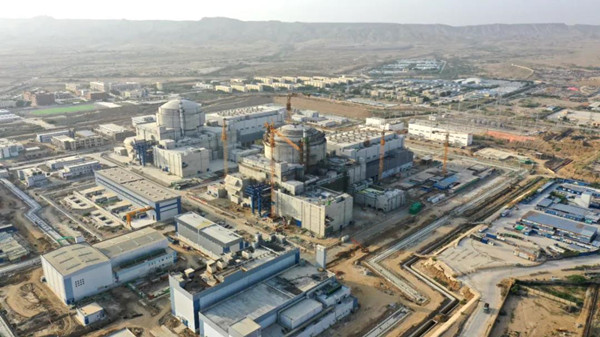Hualong One Karachi unit 3 completes hot functional tests ahead of schedule
Unit 3 of the Karachi nuclear power plant in Pakistan completed hot functional testing on Nov 4 ahead of schedule, meaning that the unit has entered the fuel loading stage. Karachi unit 3 is the second overseas Hualong One unit.

Hot functional tests involve increasing the temperature of the reactor coolant system and carrying out comprehensive tests to ensure that coolant circuits and safety systems are operating as they should. Carried out before the loading of nuclear fuel, such testing simulates the thermal working conditions of the power plant and verifies that nuclear island and conventional equipment and systems meet design requirements.
Karachi units 2 and 3 are contracted to China National Nuclear Corporation (CNNC)'s China Zhongyuan Engineering Corporation (CZEC). Hualong One is China's third-generation nuclear power technology with full intellectual property rights. It is one of the most widely accepted third-generation nuclear power reactors in the current market. At present, two Hualong One units are in commercial operation, and eight nuclear power units using Hualong One technology are in construction or in operation at home and abroad.
Each Hualong One unit generates approximately 9 billion kilowatt-hours of electricity per year, meeting the annual electricity demands of more than 4 million households in Pakistan. This is equivalent to reducing standard coal consumption by 3.12 million tons, cutting carbon dioxide emissions by 8.16 million tons, or planting more than 70 million trees. This is of great significance for optimizing Pakistan's energy mix, achieving peak carbon and carbon neutrality goals and jointly tackling the global climate crisis.
In addition, the construction of the projects has boosted the development of Pakistan's economy and relevant Pakistani industries. They directly provide over 10,000 job opportunities for Pakistan citizens, and indirectly create a further 40,000 job opportunities through the value chain, playing an important role in improving the local economy and people's livelihoods.
- China Institute of Atomic Energy
- Nuclear Power Institute of China
- Southwestern Institute of Physics
- China Nuclear Power Operation Technology Corporation, Ltd.
- China Nuclear Power Engineering Co., Ltd.
- China Institute for Radiation Protection
- Beijing Research Institute of Uranium Geology (BRIUG)
- China Institute of Nuclear Industry Strategy (CINIS)
- China Nuclear Mining Science and Technology Corporation


